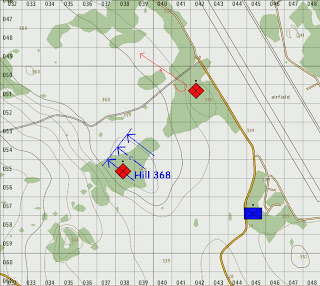 At least for me, the great thing about playing around with simulators and war games is trying to understand what the real deal is all about. I'm just so fond of this approach to the hobby that I like to browse military doctrinal publications and field manuals. There is plenty doctrinal publications out there from the US Army and the US Marine Corps, and so far I never found a shortage of material for a well-read tactical war gaming session involving US land forces.
At least for me, the great thing about playing around with simulators and war games is trying to understand what the real deal is all about. I'm just so fond of this approach to the hobby that I like to browse military doctrinal publications and field manuals. There is plenty doctrinal publications out there from the US Army and the US Marine Corps, and so far I never found a shortage of material for a well-read tactical war gaming session involving US land forces.Right now, I have two war games on my desk that are waiting to be played with some minimal doctrinal backbone: "Battle Group Commander: Episode One" and "Combat Mission Shock Force: British Forces".
Unfortunately, it turns out that the British Army tactical doctrine is ... classified! (?)
 The publications that compose the British Army military doctrine have been consolidated in the so-called "British Army Electronic Battle Box". Allegedly, "the box" is 7 CDs that are only available to British servicemen and MoD personnel.
The publications that compose the British Army military doctrine have been consolidated in the so-called "British Army Electronic Battle Box". Allegedly, "the box" is 7 CDs that are only available to British servicemen and MoD personnel.I would bet that in general terms, the British Army tactical doctrine is not that different from the one of the US Army and US Marine Corps. There are tactical drills which are almost universal. However, if one browses the scenarios included in the games I mention above, the organization and equipment of the British Army suggests that there have to be some particular things they do differently than their US counterparts.
For a complete ignorant on this topic like me, there are at least some nice sources to start learning about the real life operations of the British Army (see the attached images).
Cheers,


















